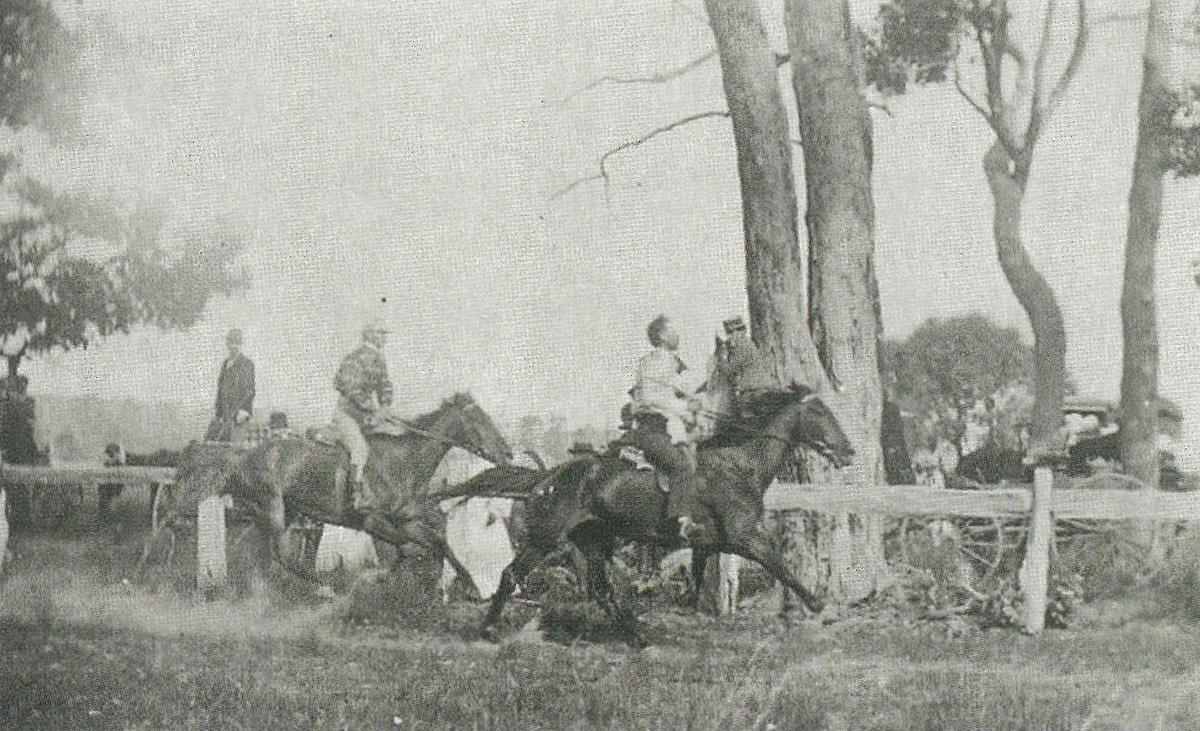
By Malcolm Gordon
Since thoroughbred racing became an organised sporting pastime, a combination of climate, pastures and proximity to Melbourne have made the Mornington Peninsula a much favoured horse breeding and training area.
Horses launched from the many flourishing breeding and training properties are increasingly taking racing’s top prizes and putting the peninsula firmly on the national racing map.
The healthy nature of the industry is reflected in the large number of studs in the northern peninsula area and newer ones in the Flinders locality, despite the closure or relocation of some studs elsewhere in Victoria in recent years.
A sample of Group and Cup winning horses bred, raised and/or trained on the Mornington Peninsula is indicative of the thoroughbred industry’s previous and continuing success in major races.
The remarkable number of quality and successful peninsula bred or trained racehorses of the modern era, with beginnings in the 1970s, reflects a continuum and development from legacies of the past.
The history of peninsula horse racing clearly indicates that from the early days of European settlement horses were bred not only for farm work but also for racing.
Records indicate that a large holding in the Rye-Tootgarook area, taken up by James Purves in the 1860s, was later used by his son James for the breeding of thoroughbred and draught horses.
At one time he had 17 stallions at stud, mostly imported, including well known horses of the time Dancer, Peter Wilkins, Touchstone and Little John, all purchased from Mr Henty who was a notable wealthy Melbourne businessman.
At his Coolart property Grimwade bred thoroughbred horses in the 1890s, one of which was a Melbourne Cup winner sired by his notable stallion Bobadil.
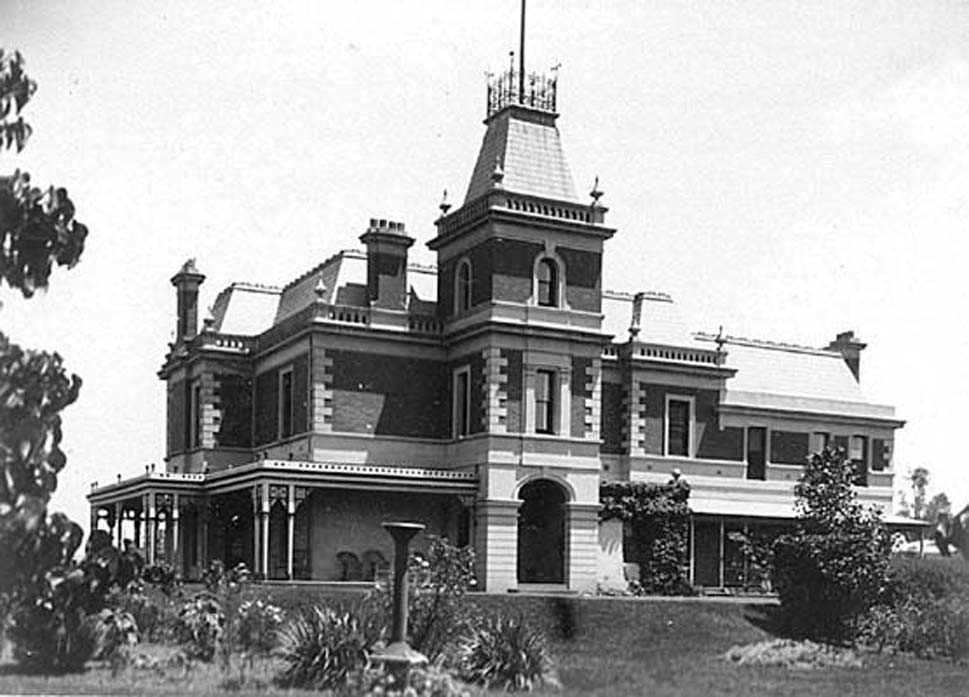
During the 1920s the then Melrose Estate property in Mount Martha was owned by Ernest Pearce who constructed a race training track and stables, near what is now Two Bays Crescent.
Here some notable horses were trained and stabled at his racing precinct.
Eric Dowdle purchased Melrose in 1932 as a developed racing establishment, and while his primary interest in the property was for guesthouse accommodation he also continued, with much success, the horse breeding and racing tradition of the property.
In consecutive years 1951 and 1952 Dowdle’s mare Happy Medium won the Mornington Cup Race, with the 1952 Cup being the last of the actual gold cups presented for that race.
The famous racehorse Mollison was stabled at Dowdle’s establishment.
On the southern flanks of Mount Martha, the 750 acre property Dalkeith Park became a notable thoroughbred stud in the period after World War Two. An adjoining land holding of 510 acres, St James Park, was owned by William Frederick Vale.
After the war, Vale’s daughter Phyllis and husband Herbert Jackson managed the two properties where Phyllis established a thoroughbred stud on Dalkeith Park.
She was very successful at race meetings and shows; one of her horses won the Moonee Valley Gold Cup race in 1954 and another horse Helion won the 1955 Australian Cup race.
An oval training track was located east of the Nepean Highway near Range Road and magnificent stables were built behind the Dalkeith Park homestead, sadly destroyed by fire in the late 1950s.
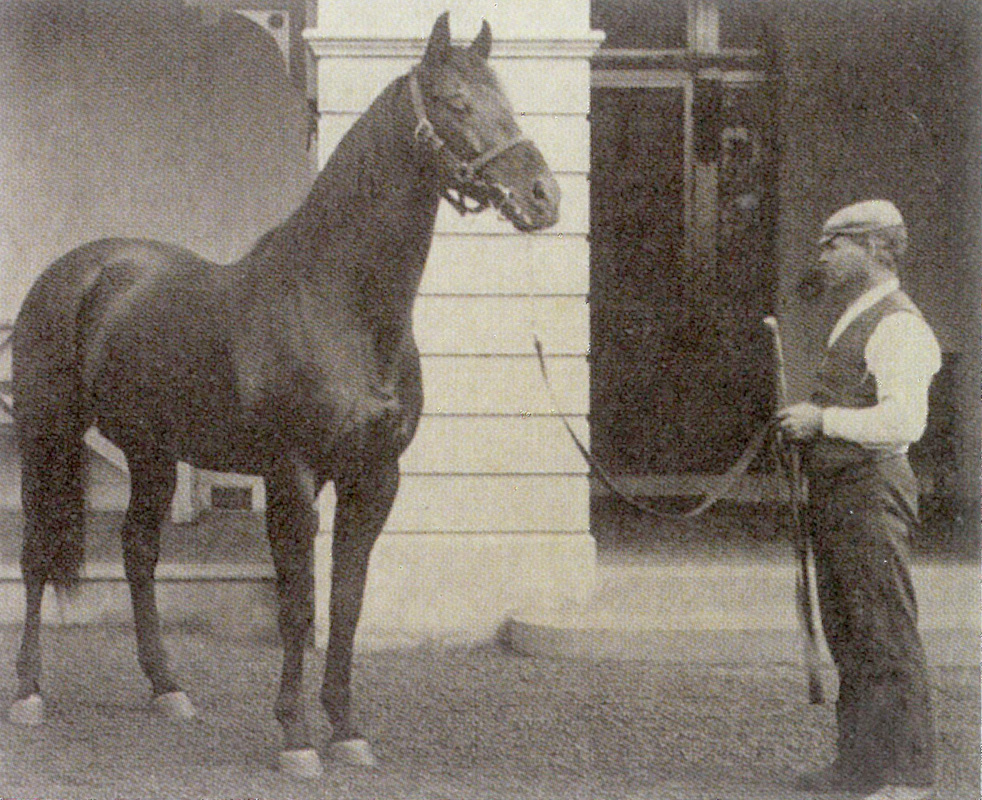
The late 1960s marked the beginning of the ‘modern era’ of thoroughbred studs on the peninsula.
At Merricks North in the early 1970s, David and Helen Hains established their notable Kingston Park Stud.
The remarkable number of racetrack winners made it Australia’s leading stud in the early 1980’s, based on the stallion Bletchingly who sired Kingston Town and a host of other top performers.
Kingston Town was the nation’s first million-dollar racehorse and when Kingston Rule won the Melbourne Cup in 1990 the stud was dubbed ‘home of the Kings’.
Other distinguished horses from the stud include Reganza, Spirit of Kingston and Big Grey Roo.
The stud ceased thoroughbred operations in the early 2000s.
Established in the late 1960s in Moorooduc, Fulmen Park Stud was named after Victor and Lila Peters’ first and champion horse Fulmen, a winner of eight stakes races including the Adelaide and Brisbane Cups in 1967.
The most notable racehorse from the stud was Taj Rossi, trained by Bart Cummings and winner in 1973 of VRC Victoria Derby G1, Cox Plate, George Adams (now Emirates Stakes), Sandown Guineas and Moonee Valley Stakes.
Other successful horses included Dark Rhythm, Taj Eclipse, Taj Royale and Rafique.
Under the management of Lee Powell, the stud is one of the few from the late 1960s still in operation today.
Another successful thoroughbred stud of the 1970s to 1990s period was John Ingleton’s Glen Appin property.
In 1991 his horse Soho Square won the million dollar prestigious Doncaster handicap in Sydney.
Some of his many other successes included Golden Slipper winner Full On Aces and Victoria Derby winner Raveneaux.
In Merricks North, Muranna Stud established by Norman and Ann Carlyon in the 1970s was another successful breeding and training property that produced distinguished horses including Affinity, Riverina Charm, Tristanagh and Sarfraz.
East Lodge Stud bred and spelled horses from the early 1970’s with some outstanding stakes winners produced by stud owner Brian Stegley.

His winning horses included Mulligatawny, Fralo, Scruples, Epilette and Exemption with the stallion Cavalry, the focus of the stud’s stallion policy on the Mount Martha property.
In the Tuerong area on estate-like grounds, Peter and Janet Moran set up their thoroughbred property The Meadows in 1985.
Notable horses associated with the Stud include 1992 Cox Plate winner Super Impose, Bomber Bill and Beldunoro.
Currently The Meadows has scaled down its breeding operations and diversified to include equestrian horses.
Among the many other studs in the 1970s to the early 2000s were: Annesleigh Park, Moorooduc; Basinghall Farm, relocated to Nagambie in 2008; Bryn Avon Farm, Red Hill South; Cresta Two, now Tarcoola Stud; Eldon Park Stud, Tyabb; Lynden Park Stud, Red Hill South; Marine Park, Dromana; Morning Star Farms, Mount Eliza and Oamaru Stud, Red Hill South.
Arguably the most successful owner, breeder and trainer property of the modern era was Taras Lodge in Moorooduc, established in 1976 by Giulio (Jim) and Piroska Marconi.
Despite numerous detractors, Jim’s racing achievements are astonishing: winning or placing in 153 Group Races (40 Group 1); from only 131 runners in 35 years, 28 individual Group winners or place-getters; winning races with almost every horse that entered his stables and raced, 102 individual winners from 131 starters of which 47 individual horses won a prestigious Metropolitan race, giving his runners to winners percentage an extraordinary 78%.
Other achievements include training Rancho Ruler to be the first Mornington horse to win one million dollars in prize money, a record only broken in 2004, and when Cossack Prince won the 1982 Hills Stakes at Rosehill, beating the favourite Kingston Town.
Other successful horses included Taras Bulba, King Marauding, Sweet Delight, Pride of Rancho, Desole, Tycoon Ruler and Sparky Miss.
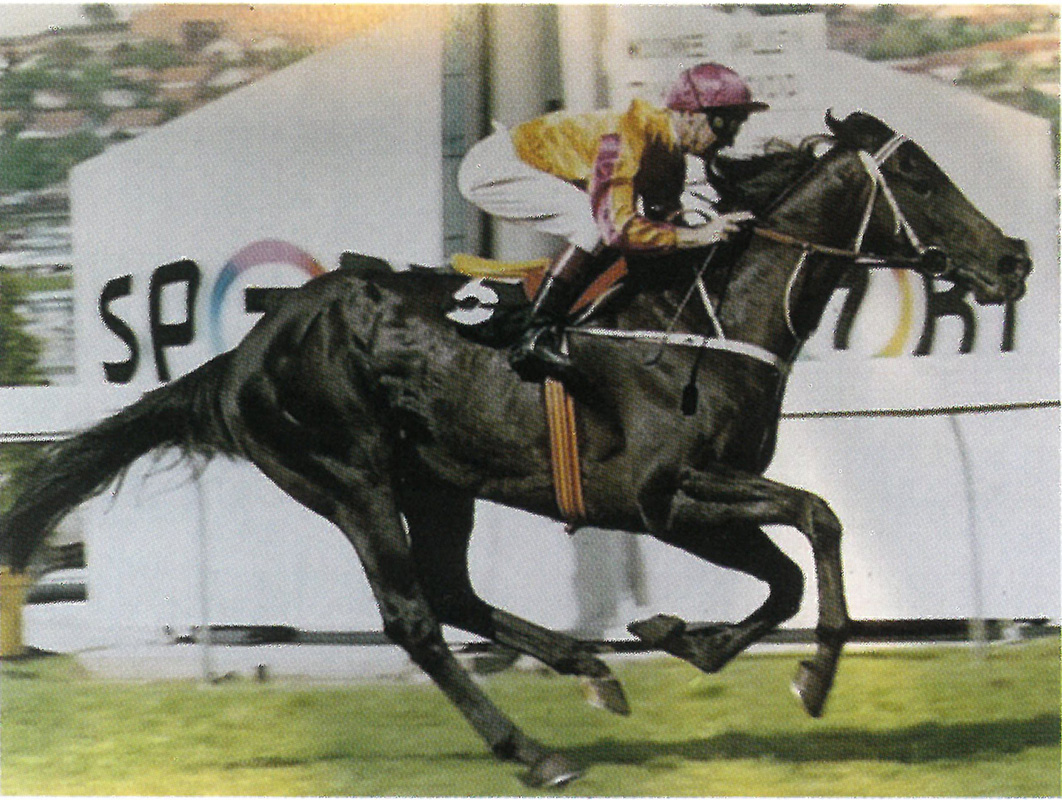
Graeme Kelly, racing writer for the Australian newspaper, in a 2003 article placed Jim Marconi in the same league as the great trainers of the past, beginning with 1860s trainer Etienne L. de Mestre (five Melbourne Cups, two of these with the horse Archer); John Tait, 1860s-1870s (four Melbourne Cups); and nearly 150 years since, trainers such as James Scobie, Jack Holt, Maurice McCarten, Fred Hoysted, Tommy Smith, George Hanlon, Colin Hayes and Bart Cummings.
Kelly suggests that of these trainers, only John Tait has a better record than the successes achieved by Jim Marconi as an owner and trainer.
Unusually, the Marconi racing venture was entirely self-funded, with all the horses owned outright by Jim and Piroska. Jim, an Italian immigrant with an innate, almost freakish ability in selecting and training potential winners, was presented with a lifetime Achievement Award for services to racing in 2004 by the Mornington Racing Club.
With the exception of Fulmen Park Stud, most of these thoroughbred properties have scaled down their operations to limited breeding or training, spelling and agistment, or relocated elsewhere in Victoria, or closed down.
Other properties have bred Arabians, Warmbloods, Quarterhorses and miniature ponies, a practice that continues today.
Nevertheless the thoroughbred horse industry continues to flourish in what could be described as the post-modern period.
While there are fewer large scale operations today, this trend has been offset by the rise in a number of smaller, highly successful trainer-dominated racing enterprises.
In 1998 Kenneth and Denise Williams purchased a property in Tuerong and named it Tarcoola Stud after the 1893 Melbourne Cup winning horse Tarcoola trained and owned by Joseph Cripps, the great-grandfather of Denise Williams.
The stud focuses on the breeding and sale of all bred stock in a policy that includes DNA testing to measure any indications of inbreeding in their mares.
Winning horses from Tarcoola Stud include Sacred Choice (Doncaster Mile Gr.1), Costa Viva (N.Z. Guineas Gr.1.2013), Tears to Diamonds (Malaysian Horse of the Year 2011) and St Moritz (Macau Derby Gr.1.).
Nearby property Denistoun is also of racing interest. It was used by trainer Lee Freedman before he moved the operation to his Markdel training complex at St Andrews near Rye in 2002 (closed down and relocated in 2013).
It was also the location for some of the scenes filmed in the production of the 2011 Australian racing movie The Cup, a biographical film centred around the story of jockey Damien Oliver’s extraordinary Melbourne Cup win on Media Puzzle in 2002.
There was a poignant moment at the end of the race when Damien stood up in the saddle, tilted his head and pointed skywards in deference to his brother Jason who was tragically killed in a racing accident a few days before the Cup race.
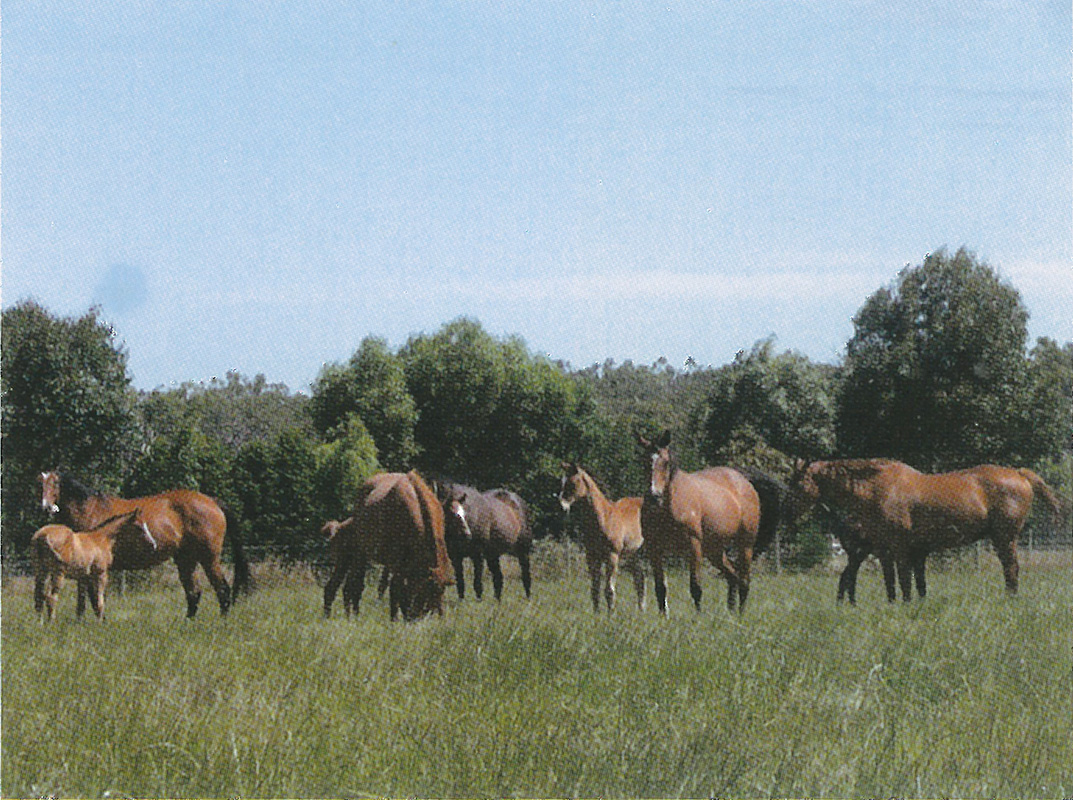
Currently the largest thoroughbred breeding enterprise on the peninsula is Bombora Downs Stud, established on a 56-hectare property at Bittern by Christoph Bruechert in 2003. It is currently the only stud standing stallions, including Warhorse (NZ), Dandino, Jungle Ruler and De Gaulk, and as a breeding operation foals between 100 and 120 progeny each year.
Artificial insemination is not permitted in the thoroughbred horse industry, so properties not standing stallions must transport their brood mares for servicing.
Other smaller and boutique-style thoroughbred establishments continue to perpetuate the peninsula tradition of producing winning racehorses. Among these are Merricks Station Stud, Musk Creek Farm, Flinders Park Stud and Two Bays Farm. A measure of the confidence and future direction of the industry is in evidence at the Pinecliffe Stables and training complex at Mount Eliza.
Established in the early 2000s on a 50-hectare land holding, the multi-million dollar enterprise features state-of-the-art facilities including stables, paddocks, pool and three training tracks. The facilities are rented to trainers and attract name players in the industry such as Grahame Begg Racing and Freedman Racing along with their top horses.
The innovative and sophisticated complex has provided a benchmark for training facility excellence within Australia, as well as contributing to the longer-term significance of the peninsula thoroughbred industry.
With permanent settlement on the land and in the developing townships increasing from the 1850s, a range of pastime activities arose bringing the small communities together.
Given the predominantly Anglo Saxon and Irish settler origins, it is not surprising that horse racing became one such popular pastime.
Race meetings in various years and locations from 1856 were initially localised events due to poor roads and rudimentary transport, a factor limiting horse numbers available for racing as well as equine quality.
It was not unusual at those early meetings for horses to run in four races and for there to be races for ponies.
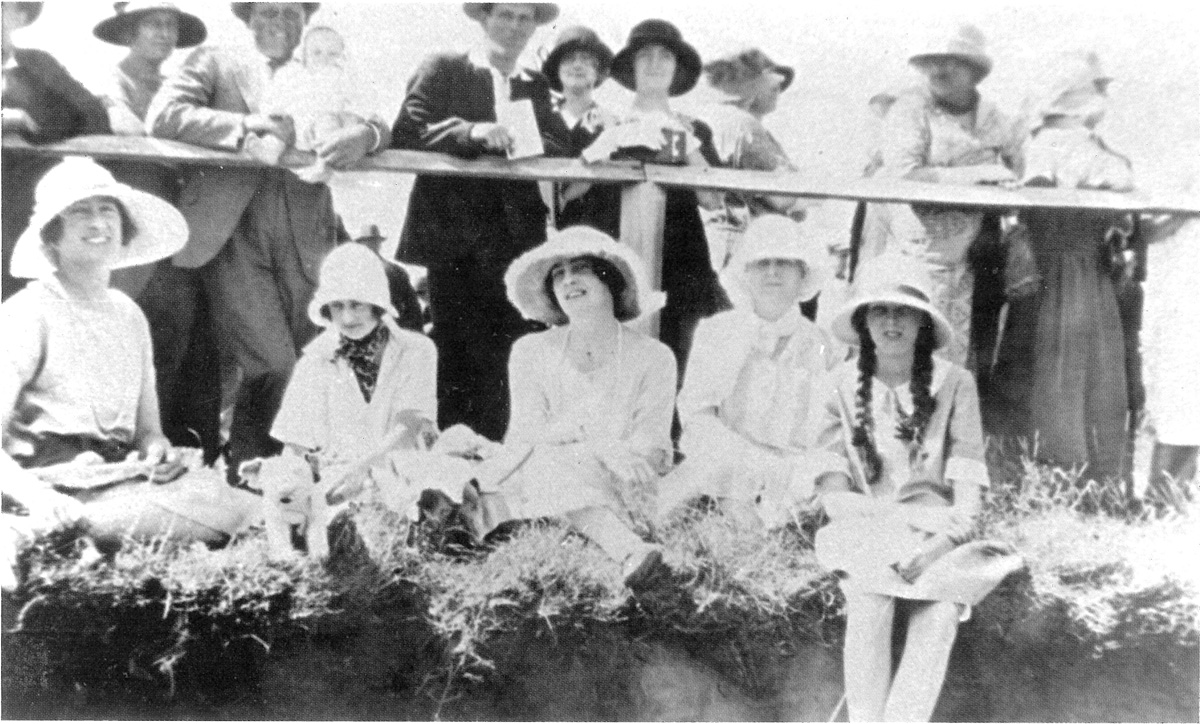
Few race meetings attracted the interest of the Melbourne Argus, nor acknowledgement in the Victorian Racing Club (VRC) Register of 1865–66, the first official record of all race meetings held in Australia.
The probable reason for this was that race meetings were not held under the banner of an established club but were localised, picnic-style race meetings organised by individuals or small groups.
The highly sophisticated nature of all elements of the racing industry today is a far cry from its fledgling beginnings at the earliest tracks and race meetings at Frankston, Dromana, Balnarring, Tyabb, Flinders, Rye, Baxter, Mount Eliza and Mornington.
The development of the peninsula’s racing industry can be traced back to the formation of the Baxter Flat Racing Club in 1856.
The club’s first meeting was held in May of that year on a course constructed on Captain Benjamin Baxter’s property near the present site of Baxter Park, opposite Sages Cottage on Sages Road.
Captain Baxter was president of the original club and races appear to have been held intermittently from the club’s inception.
Next came the Balnarring Racing Club in 1863, which has experienced five names in its varied history: Hastings and Balnarring Racing Club 1863-1881; Balnarring Racing Club 1882-1917; Bittern Racing Club 1918-1927; Bittern and Emu Plains Racing Club 1928-1932; and its current ‘racing colours’ as Balnarring Picnic Racing Club since 1933.
Despite the names, it has been consistent in its location at Emu Plains.
A Messmate forest, arcing from the north-east to the south-west, provides a beautiful backdrop to the 2000 metre track and a shaded setting for the Club facilities.
Races are held on the 62-hectare site officially reserved in 1889 as the Balnarring Racecourse and Public Recreation Reserve. Only recently has the original European name Emu Plains been more widely used.

While the centre of course is now cleared for car parking, and the track enclosed by rails, it was not always like this. In earlier times the centre was completely covered with bush and there are many stories of the hanky-panky that went on during races on this blind side of the course.
Only the straight was railed, the rest was marked with flagged stakes.
At one stage the betting ring could accommodate 60 bookmakers!
Meetings provided ideal opportunities for trialling horses and many a good racehorse and pony won their first races on this course, going on to win in Melbourne and interstate.
Some names that might revive memories are Cavalier, Kumbungie and the horses owned by the late Jack O’Neill of Tyabb such as Labour, In Vain, Mikado, Primrose and Vain Hope. It was with a wistful look on his face that the late Ernie Smith of Crib Point recalled the days he rode the champion pony Master Larry in races at Balnarring during the 1920s.
In the years 1918 to 1927 the Bittern Racing Club was for ponies only, and Ernie described how they would take the ponies to Bittern by train and then lead them to Emu Plains.
Today the races attract picnic-class horses for the enjoyment of competing as well as for the prize money or the premier event trophy, the Balnarring Cup.
The Frankston Race Club is recorded in the Victorian Racing Club Turf Register of 1865–66 as the first on the Mornington Peninsula, however the register has no mention of any races having been held on the Frankston Race Course.
The Register described a course located near the Dandenong Road crossing as “A mile long, oblong in shape and left handed; straight run in about 400 yards and nearly flat and clear of timber but not fenced in”. Despite the Register only citing the race track, it seems improbable that, after establishing the course, no races were held on it.
The earliest race meeting on the peninsula recorded by the VRC Turf Register was the first of the Arthurs Seat Races, held in March 1868 just seven years after the running of the first Melbourne Cup race.
This course was located on a large block of land adjoining the Dromana Hotel in the centre of the township. Although there were no further VRC Turf Register recordings of races, it appears meetings were held, perhaps intermittently, until the early 1900s when the land was subdivided and marketed as the Foreshore Estate Housing Development Scheme.

The racecourse was then moved further east to where the Recreation Reserve is located today (adjacent to the Dromana Secondary College) and where in 1911 the Dromana Sports Club held a program of nine events including horse, pony and foot races.
In 1874 the first Mornington Shire races were staged, held again in 1875, 1876 and 1878.
The results were listed in the VRC Turf Register but there were no details of the racecourse. It is likely that these meetings were held at the Baxter Flat course and under the Baxter Flat Racing Club banner.
From 1880 interest in these races extended beyond the peninsula, with race meetings run annually until 1892 when the effects of the Depression of the 1890s forced a halt to meetings.
The club reformed in 1899 as the Mornington Racing Club (MRC) and held two meetings in that year, with further races held annually on the Baxter Flat course until 1903.
These meetings were full of drama. Lacking strict supervision and VRC control, dishonesty among horse owners and jockeys was rife, as was corruption, to the extent that racing at the Baxter Flat course lapsed until 1909.
The Mornington Standard newspaper described the 1903 race meeting as “a disgraceful piece of crooked running”.
Meetings held at Rye could be described as ‘bush and beach races’. From the 1870s Easter Sports meetings were staged on Rye Front Beach, featuring horse races, races amongst fishermen, sculling and foot races.
Other recordings of races include meetings held on the flatter part of James Purves’ property near Rye Front Beach, and bush races at a Turkey Flat site near the Dunes Golf Links today.
Further south the Flinders Race Club staged their first meeting on 17th March 1883. The popularity of horse racing, particularly for the large number of Irish settled in the Shoreham-Flinders area, meant that this first meeting was held on St Patricks Day, on the site of the current golf course.
From its staked and rough track beginnings, the course was developed over the years and meetings were held there intermittently until the last recorded races on New Years Day in 1897. However there is evidence to suggest that further race meetings co-existed with the developing golf course into the early 1900s.
In 1909 the newly formed Tyabb Race Club held only one known meeting, in March of that year at Jack O’Neill’s property Bunguyun. The course was located on the property’s corner paddock bounded by O’Neills Road and the Frankston-Flinders Road, and the track was used primarily for training purposes.
Prompted into action by the formation of the Tyabb Race Club in 1909, the Mornington racing fraternity quickly set about re-establishing the Mornington Club with one major change: a new venue for meetings at Preston Grange, located at James Grice’s Moondah property along Kunyung Road, Mount Eliza.
Meetings were held at Preston Grange in 1909, 1910, and 1912.
The Mornington Racing Club (MRC) moved to its current Mornington-Tyabb Road site in 1911, when it leased land on the then Drywood Estate property and ran its first race meeting there in February of that year.
In 1912 the club became registered with the VRC and embarked upon improving facilities at its new site, thus necessitating a return to Preston Grange for its 1912 meeting.
It is interesting to note the prize money for the 1912 event: Mornington Handicap, £15; Beleura Plate, £10; pony race, £5; and the Trial Handicap, £8.
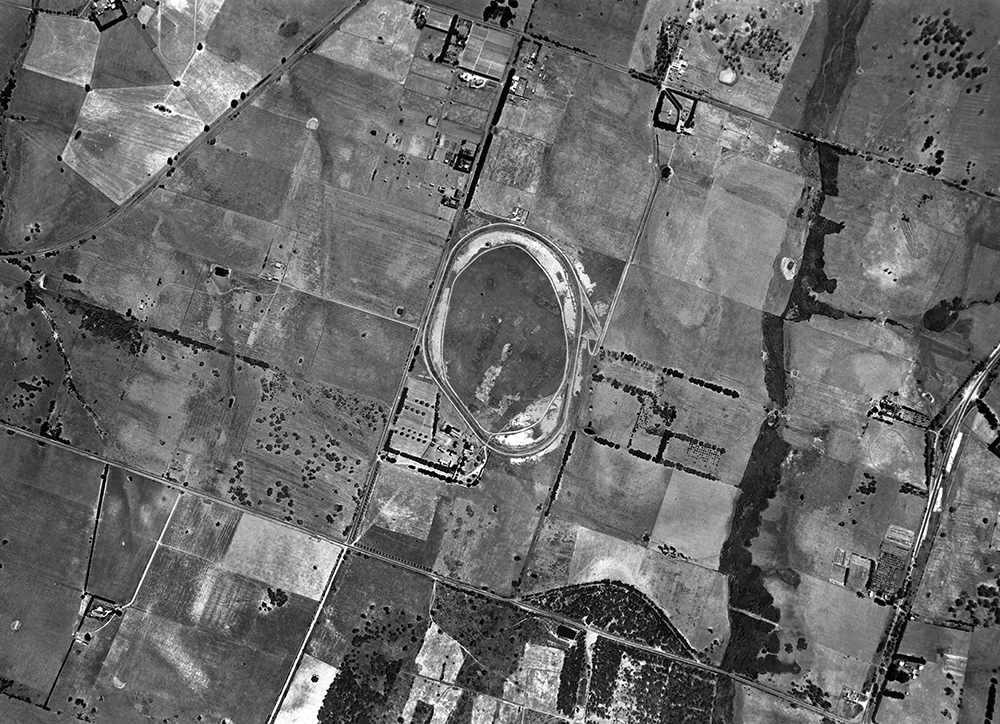
Race meetings at this now permanent MRC home continued annually from 1913 until 1941, with breaks due to World War One from 1914 to 1916.
By 1920 the Club’s strong financial position allowed the running of four meetings each year on a course that was acclaimed as the most popular outside metropolitan Melbourne.
At times there were even special trains to bring racegoers from Melbourne, a further indication of its standing and popularity.
The first Mornington Cup was held in January 1921 with prize money of £80.
Members of the English cricket team attended the 1937 race meeting where one of their batsmen, Maurice Leyland, presented the cup trophy to the winner.
During World War Two racing was suspended from 1941 to 1945. In 1946, instead of horses on the site, the army established a signals training depot and camp.
The final race before military operations took over the site was staged on 13th November 1941 when eight races were run.
It was the entrepreneurial skill, energy and foresight of businessman and aviation pioneer Sir Reginald Ansett that laid the basis for the success, high reputation and status of events conducted by the MRC today.
Reginald Ansett chaired the first meeting to revive the MRC on 3rd August 1947, by which time the racecourse, vacated by the army in 1946, was in a sad state of disrepair, overgrown with weeds and the track dotted with the old signals depot telegraph poles.
Despite its wilderness character and the financial and administrative problems in getting the track and facilities back to operational standard, this enormous task was achieved in just four months under the stewardship of Ansett.
He set up the Mornington Racecourse Proprietary Limited Company to purchase the Drywood Estate land for £14,000 and to lease the property to the MRC, raising money from interested shareholders.
As president of the club, he also purchased buildings, huts and building materials left behind by the army.
The first meeting after World War Two was held in December 1947 and attracted a crowd of over 6000. The Mornington Post headlined the event “Mornington Racing Club’s Great Revival”. Equally successful was the MRC meeting on 15th January 1948, with a record crowd of 7500.
Notable attendees included the Lord Mayor Sir Raymond Connelly and English entertainer George Formby.
Race meetings have been run continuously by the MRC at this site since 1947 to the present day.
A great crowd pleaser was the inaugural steeplechase event held on the MRC’s new figure-8 course on 10th October 1957. The popularity of this race resulted in its immediate incorporation into the Mornington Cup Day program, and such events were run for several years.
While the course still retains this figure-eight configuration, now it is only used for training purposes.
The permanently sited, well developed MRC track and facilities fostered the establishment of several small thoroughbred training and stabling enterprises around its perimeter,particularly along Racecourse, Bungower and Roberts Roads in the 1970s and 1980s.
This racing stables precinct thrived, particularly when Mornington became a base for many of the New Zealand ‘Kiwi Raiders’, each with their sights set on the Caulfield and Melbourne Cups. The influx included many trainers and well known jockeys, Bob Skelton and Gary Willett among them, as well as major race winning horses such as Kiwi, Van der Hum and Il Tempo, stabled and worked at Mornington.
Although the MRC has gone from strength to strength, there has been a noticeable decline in the area described as the racing stables precinct, particularly along Bungower and Racecourse Roads. This is probably due to economic rationalisation of the industry and the difficulty for smaller establishments to remain viable.
Today the Mornington course has the reputation of being one of the finest country race tracks in Victoria, hosting premier events which attract quality horses from within Victoria and Interstate, and large crowds.
In March 2010 the MRC joined with Caulfield and Sandown Racing Clubs under the ownership banner of the Melbourne Racing Club.
This merger has enabled major improvements to the track, state of the art racing infrastructure, and enviable patron services and facilities.
The merger has greatly added to the importance of MRC’s most prestigious race event, the Mornington Cup, as now the winners have automatic entry into the Caulfield Cup race, as well as prize money and trophy valued at around $350,000.
Currently over 80 trainers utilise the MRC training facilities and many of the races staged in the 18 meetings a year program are used as preparation runs by horse owners and trainers.
From its humble Baxter Flat Racing Club forerunner days and the Ansett-inspired revival, the MRC is a remarkable story of racing history, endeavour and success.
Footnote:
This story is an extract from of Malcolm Gordon’s recently published “A Never Ending Journey”. It is available at bookstores, newsagencies and some wineries across the peninsula.





